18 Best Retirement Stocks to Buy in 2018
Building a dependable portfolio of retirement stocks isn’t easy in today’s world of historically low interest rates and record-high stock prices.


Building a dependable portfolio of retirement stocks isn’t easy in today’s world of historically low interest rates and record-high stock prices. The 2.4% yield offered on a 10-year U.S. Treasury note doesn't provide enough safe income to fund a full retirement, nor does the 1.8% average yield among companies in the Standard & Poor’s 500-stock index.
Some investors have channeled more of their retirement money into high-yielding stocks, which provide greater current income and potentially stronger long-term total returns. But beware: Sometimes, eye-popping yields are a symptom of a struggling company that may deliver nothing more than steep capital losses and an eventual dividend cut or suspension.
The 18 high-dividend holdings featured today are different. They are arguably some of the best retirement stocks in the market as we head into 2018. These companies have elevated their payouts for many years, boast dividend yields up to nearly 7% and maintain healthy Dividend Safety Scores – a metric calculated by Simply Safe Dividends to assess a company’s risk of future dividend cuts. In other words, these companies have sturdy fundamentals that support secure, growing dividend income in the years ahead.
Let’s look at the 18 best retirement stocks for 2018.
Disclaimer
Data is as of Dec. 5, 2017. Dividend yields are calculated by annualizing the most recent quarterly payout and dividing by the share price. Stocks are listed in alphabetical order. Click on ticker-symbol links in each slide for current share prices and more.
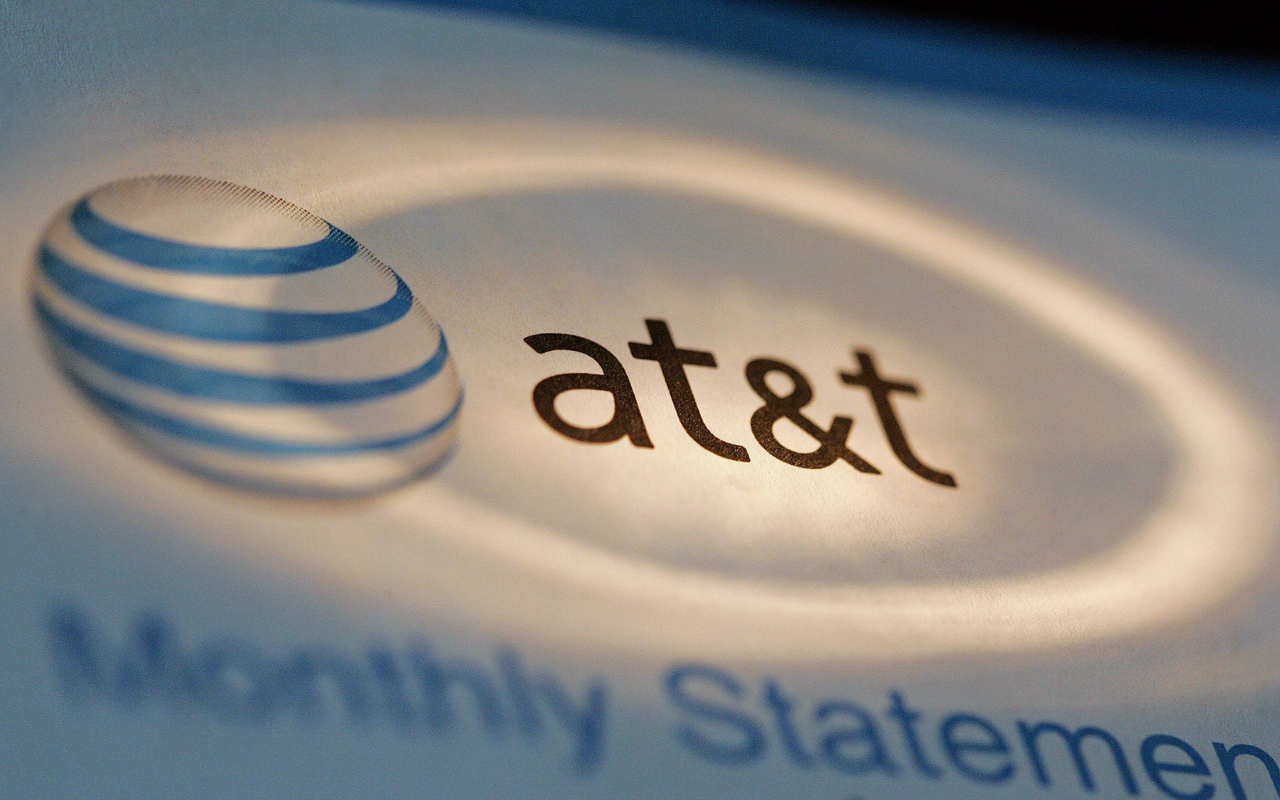
AT&T
- Dividend yield: 5.4%
- Consecutive years of annual dividend increases: 34
- AT&T (T, $36.55) is a Dividend Aristocrat that has paid higher dividends every year for more than three decades. It’s also the largest communications company in the world, providing wireless service to 153 million customers, enabling 47 million pay-TV connections and supporting 16 million internet connections in service.
AT&T has required $140 billion in capital investments over the past five years to support the behemoth’s array of hard-to-replicate assets. Smaller companies simply lack the financial clout and customer base needed to build competitive infrastructure networks in these areas.
Competition between the major telecom and media giants remains fierce as new technologies, shifting consumer preferences, and mature markets are combining to create growth challenges, as Charles Sizemore points out. However, AT&T has responded by shifting its business mix beyond wireless services over the past few years, first buying DirecTV for nearly $50 billion in 2015, then in 2016 bidding to acquire Time Warner (TWX) – an acquisition it’s now battling with the Department of Justice to clear. Bundling these services together will hopefully reduce churn and squeeze more value out of the company’s existing customer base, providing excellent free cash flow with which to support the dividend.
While the company’s elevated debt load from recent acquisitions and investments means payout growth may remain low over the coming years, the dividend – which provides the highest yield in the Dow Jones Industrial Average – is on solid ground.

Crown Castle International
- Dividend yield: 3.9%
- Consecutive years of annual dividend increases: 3
- Crown Castle International (CCI, $108.81) is the highest-yielding stock in Bill Gates’ dividend portfolio and the largest provider of communications infrastructure in the U.S.
The real estate investment trust (REIT) owns, operates and leases more than 40,000 cell towers and over 60,000 route miles of fiber across the U.S. Wireless carriers such as AT&T depend on Crown Castle’s infrastructure so they can provide wireless services to consumers and businesses.
Morningstar analyst Alex Zhao, CFA, nailed the appeal of this mission-critical industry, writing, “Favorable characteristics of the tower business model include recurring revenue, high operating leverage, predictable operating costs, and minimal nondiscretionary capital expenditures. Long-term contracts with built-in price escalators lead to high revenue visibility. Additionally, the strong credit quality of tenants, the critical nature of tower assets, and the low tenant churn make the revenue source particularly stable.” It’s no wonder why Bill Gates’ investment manager appears to like Crown Castle for the long-term.
Management’s recent guidance for 2018 reflects more optimism going forward. The company expects adjusted funds from operations (AFFO, an important measure of a REIT’s financial performance) to grow 10% and had the confidence to increase the company's dividend by 11%. Crown Castle's forecast implies an AFFO payout ratio near 75%, which is very reasonable for a REIT – especially one that enjoys a high level of recurring revenue and an investment-grade credit rating.
CCI’s high yield and solid dividend growth prospects, combined with the continued growth of data, make it one of the best retirement stocks for 2018.

Duke Energy
- Dividend yield: 4.1%
- Consecutive years of annual dividend increases: 13
- Duke Energy (DUK, $87.96) is a regulated utility company that serves approximately 7.5 million retail electric customers, as well as distributes natural gas to around 1.6 million customers, across the American Southeast and Midwest.
The key to Duke Energy’s appeal as a retirement stock is its stability. Regulated utility stocks essentially act as government-sanctioned monopolies, operating as sole suppliers within their service regions. Constructing power plants and distribution networks is extremely costly, often making it uneconomical to multiple utilities in any one territory. As a result, state commissioners regulate the price utilities can charge customers, providing enough incentive to encourage investments in improving quality and reliability without allowing consumers to be price-gouged.
Morningstar analyst Andrew Bischof, CFA, writes that “Duke operates in highly constructive regulatory regions, particularly in Florida, which allows the firm to recover costs in a timely fashion through supportive regulatory outcomes. … These constructive relationships that management has formed should also help protect Duke if interest rates rise and the company seeks rate relief for a higher cost of capital.”
These qualities have helped Duke Energy pay uninterrupted quarterly dividends for 91 years. Looking ahead, management targets 4% to 6% annual payout growth, which will be driven by mid-single-digit annual expansion in Duke Energy’s regulated electric and gas earnings base.

Enterprise Products Partners L.P.
- Distribution yield: 6.8%*
- Consecutive years of annual dividend increases: 20
- Enterprise Products Partners L.P. (EPD, $24.80) is one of the largest integrated midstream energy companies in the country and has delivered clockwork-like distribution growth for 53 consecutive quarters. The master limited partnership’s (MLP) pipelines, storage facilities and processing plants are connected to U.S. major shale basins and play a critical role in aggregating domestic natural gas liquids to be used in plastics and other goods around the world.
Enterprise Products Partners has rewarded shareholders with many years of distribution growth in part thanks to its stable business model. The integrated nature of its operations reduces the impact of commodity swings, and a significant amount of its cash flow is fee-based and supported by long-term transportation contracts with blue-chip customers.
This Kiplinger Dividend 15 member boasts a healthy retained distributable cash flow coverage ratio of 1.2x over the past year, an investment-grade credit rating and numerous expansion projects under construction. That has the company in prime position to continue delivering safe, growing income for retirement portfolios.
*Master limited partnerships pay distributions, which are similar to dividends, but are treated as tax-deferred returns of capital and require different paperwork come tax time.
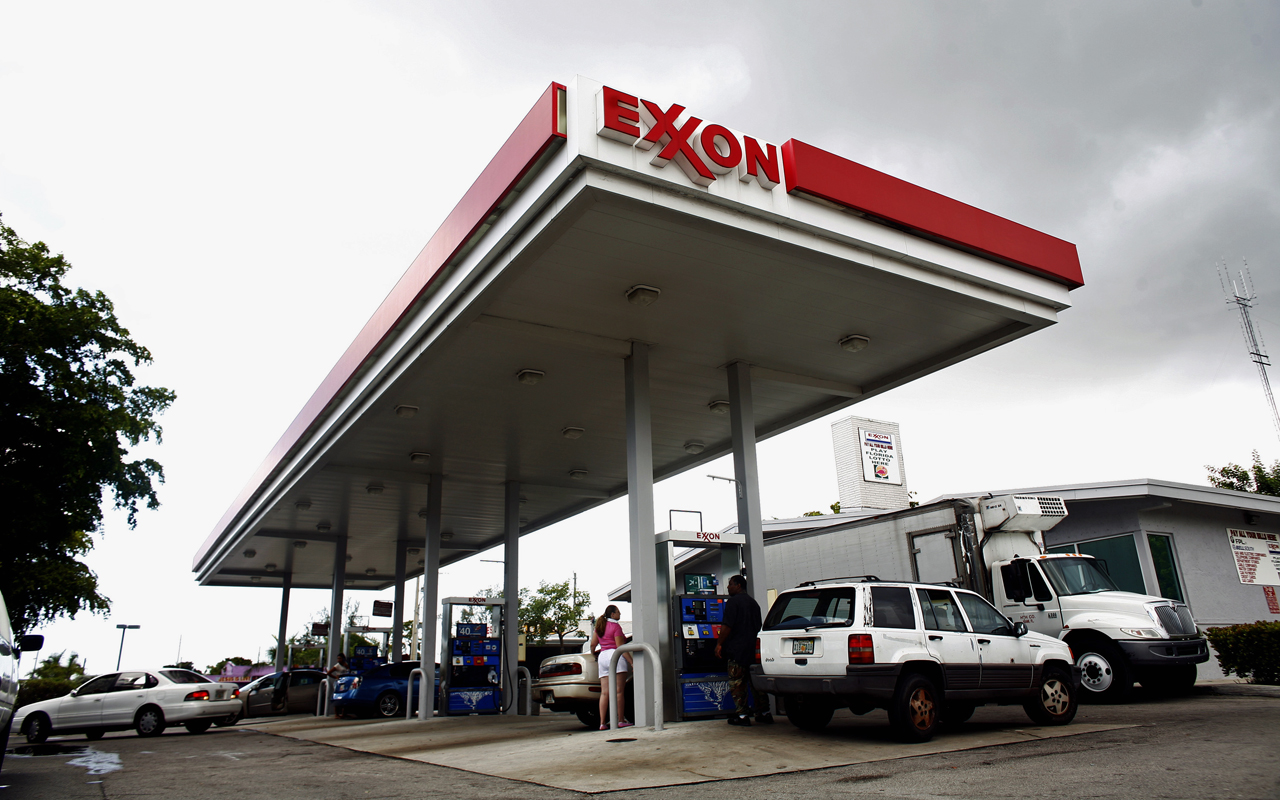
Exxon Mobil
- Dividend yield: 3.7%
- Consecutive years of annual dividend increases: 35
Disruption across global energy markets in recent years forced several major oil firms, including ConocoPhillips (COP) and National Oilwell Varco (NOV), to reduce their dividends. But Exxon Mobil (XOM, $82.89) has remained strong, continuing to pay uninterrupted quarterly dividends since 1882.
Morningstar analyst Allen Good, CFA, doesn’t see that changing anytime soon, writing, “The combination of long-life assets and flexible investment in short-cycle assets should safeguard free cash flow in a volatile oil price environment, leaving Exxon able to cover the dividend at oil prices as low as $40 per barrel.”
Exxon’s impressive durability is made possible by the company’s massive scale, disciplined investments and integrated operations. Cash flow is nicely diversified across upstream, downstream and chemical operations globally, so when market is weak, another is likely picking up the slack. And as the largest publicly traded energy company, Exxon Mobil also enjoys greater economies of scale to help lower its operating costs – an important trait in commodity markets. Management has a solid long-term track record of disciplined capital allocation as well, helping the firm enjoy higher returns on capital employed than its major peers.
These factors have allowed Exxon to improve its dividend for 35 consecutive years. Exxon’s current cash flow already covers its payout, and oil prices are bouncing back, positioning the Dividend Aristocrat to continue its dividend growth streak.

Magellan Midstream Partners L.P.
- Distribution yield: 5.4%
- Consecutive years of annual dividend increases: 17
- Magellan Midstream Partners L.P. (MMP, $67.02) is a master limited partnership that helps transport, store and distribute petroleum products. The company boasts the longest refined-products pipeline in America and enjoys predictable fee-based profit driven by throughput volume and tariffs, not unpredictable commodity prices.
One of Magellan’s unique qualities is its lack of incentive distribution rights, which give part of an MLP’s incremental cash flow to the general partner. As a result, Magellan retains more cash flow which it can use to internally fund growth projects, boost shareholder distributions and keep financial leverage at a healthy level.
Magellan’s conservatism and mission-critical energy infrastructure have resulted in excellent long-term distribution growth. The company’s distribution has increased 62 consecutive quarters since the company’s IPO in 2001, growing at a compound annual rate of 12% during that time.
Management targets 8% annual distribution growth for 2017 and 2018 with a secure 1.2x distribution coverage ratio. In other words, income investors likely can count on Magellan to deliver the same generous, fast-growing cash flow stream it has become known for over time.

Main Street Capital
- Dividend yield: 5.7%
- Consecutive years of annual dividend increases: 6
- Main Street Capital (MAIN, $39.91) is an internally managed business development company (BDC) that has more than $3.7 billion in capital invested via its hybrid debt-and-equity strategy.
Congress created the BDC structure in 1980 to facilitate lending to and investing in small- and midsize businesses. Main Street provides debt and equity capital to private companies, earning a return by generating income and capital gains. Investing is all about managing risk, and Main Street Capital has shined here.
The company’s total investment portfolio is spread across nearly 200 companies with an average investment size of just $10 million. No investment exceeds 3.3% of overall portfolio value or income, and the portfolio is well-diversified across geographies, industries, transaction types and end markets.
The firm’s investment-grade debt rating from Standard & Poor’s and internally managed structure also lower its cost of borrowing, which provides the company with a greater margin of safety as it invests.
Main Street Capital has never lowered its recurring monthly dividend, which has increased 73% since the company went public in 2007. Furthermore, distributable net investment income has always covered its payout. Simply put: Main Street has earned its status as one of the best monthly dividend stocks.
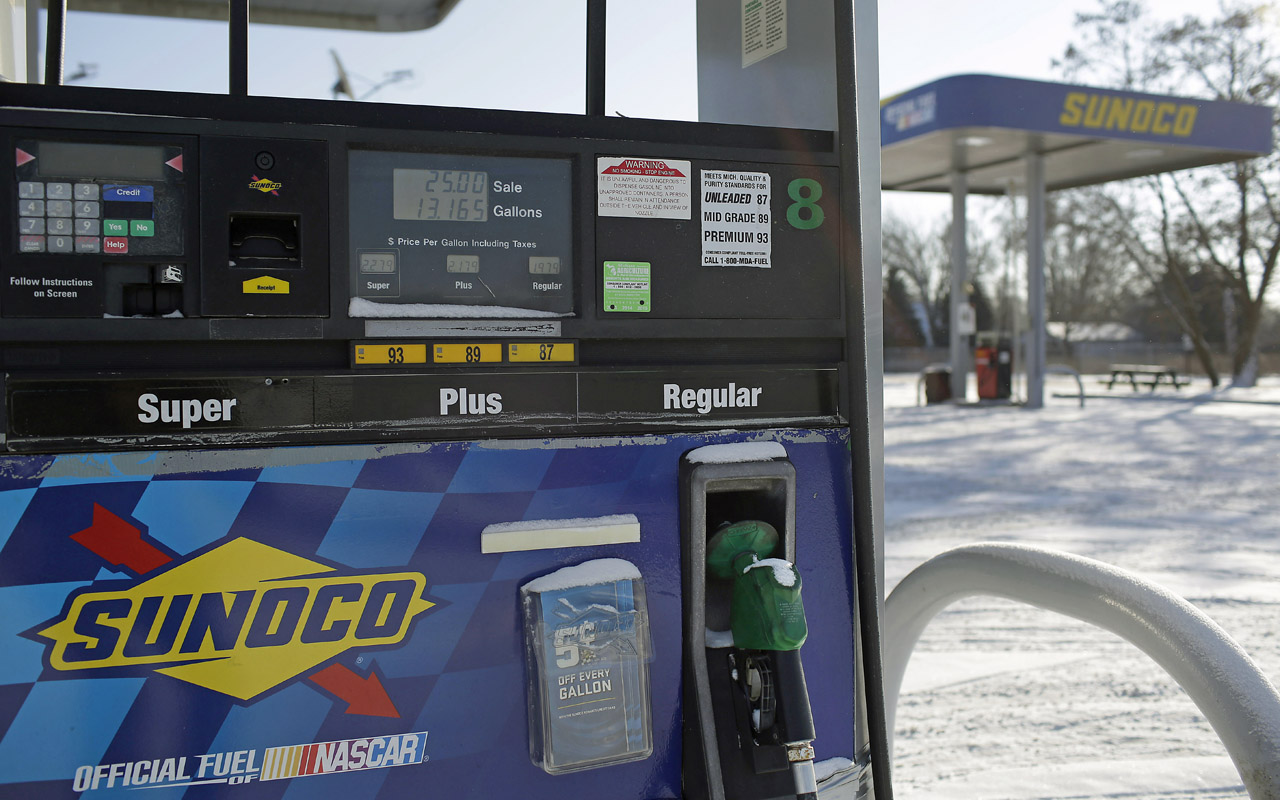
National Retail Properties
- Dividend yield: 4.6%
- Consecutive years of annual dividend increases: 28
Companies focused on brick-and-mortar retail have been out of favor in the market, including National Retail Properties (NNN, $41.54), which has delivered a total return of less than 5% over the past year while the S&P 500 has rallied 22%. But while concerns about the continued rise of e-commerce and shifting consumer shopping preferences are valid for certain companies, NNN appears to be an exception.
National Retail owns more than 2,600 single-tenant properties that are leased to more than 400 tenants – such as Sunoco gas stations and Dave & Buster's (PLAY) – across 38 different industries, and has intentionally avoided retail categories most vulnerable to the e-commerce threat. That strength is clear in its occupancy rate, which has not dipped below 96% for more than a decade.
In fact, CFRA equity analyst Chris Kuiper wrote that “We think NNN is more insulated from retailer woes compared to peers as most of NNN’s tenants are either restaurants or retailers focused on necessity-based shopping such as convenience stores, auto parts/service centers, and banks.”
National Retail’s “triple-net” leases shift the burden of property operating expenses to the tenant, improving the company’s cash flow. That has allowed the company to grow its payout for 28 consecutive years, while maintaining a conservative 70% AFFO payout ratio.
Core funds from operations grew 10.2% year-over-year during the third quarter, and portfolio occupancy remained strong at 98.8%. As long as National Retail keeps producing results like that, it’s well-positioned to remain among the best high-dividend stocks.
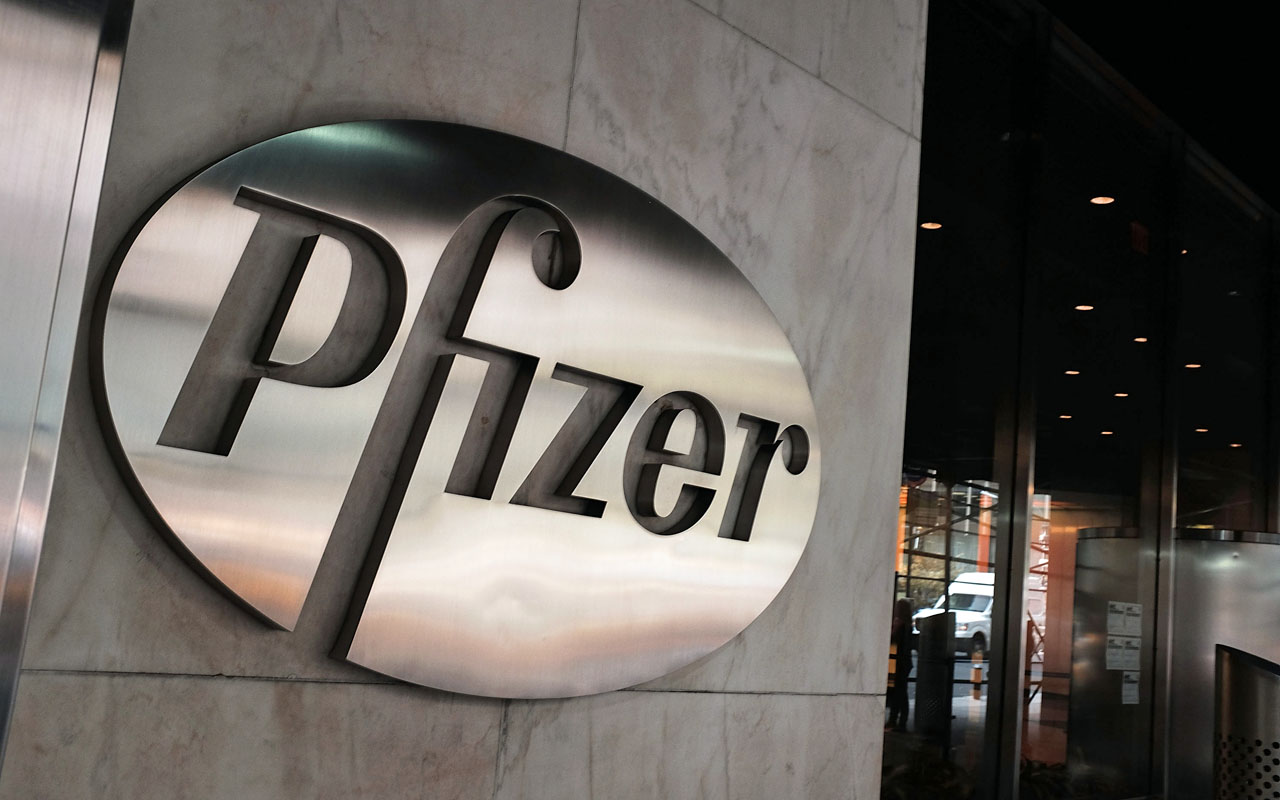
Pfizer
- Dividend yield: 3.6%
- Consecutive years of annual dividend increases: 8
- Pfizer (PFE, $35.63) is one of the largest pharmaceutical companies in the world, boasting more than $50 billion in annual revenue. The company’s portfolio includes a range of medicines, vaccines and consumer health care products that are sold in more than 100 countries.
Substantial research and development costs are required to create new medicines and bring them to market. Successful new products enjoy patents that make monopolistic profits possible for several years. As health care spending continues rising and populations age around the globe, Pfizer’s diverse portfolio should see demand for many of its offerings grow in the years ahead.
Morningstar analyst Damien Conover, CFA, writes that “Pfizer’s foundation remains solid, based on strong cash flows generated from a basket of diverse drugs. The company’s large size confers significant competitive advantages in developing new drugs. This unmatched heft, combined with a broad portfolio of patent-protected drugs, has helped Pfizer build a wide economic moat around its business.”
Importantly, the company expects negative revenue impacts from branded products that have lost patent exclusivity to diminish over the next decade. Meanwhile, Pfizer’s growing pipeline potential should reduce the threat of generic competition to some of its legacy blockbuster products. The company has more than 90 projects in development, and management expects a multiyear wave of potential new product launches to begin.
Pfizer has delivered higher dividends for seven years and maintains a healthy payout ratio near 50%. An investment-grade credit rating, recession-resistant products and consistent cash flow generation put this Big Pharma giant among the best retirement stocks to buy in 2018 and beyond.

Philip Morris International
- Dividend yield: 4.1%
- Consecutive years of annual dividend increases: 9
- Philip Morris International (PM, $105.46) was formed when Altria (MO) spun off its international operations in 2008. Today, Philip Morris sells tobacco products in more than 180 markets around the world, excluding the U.S.
Philip Morris owns six of the top 15 international cigarette brands in the world, including No. 1 Marlboro, and commands an impressive 15.3% global market share (27.9% excluding China). Selling addictive products under those strong brands has helped PM enjoy premium pricing power and double-digit operating margins for many years.
As government excise taxes rise and health awareness increase, fewer consumers are smoking. However, Philip Morris has responded by developing reduced-risk products (RRPs), which present less risk of harm to smokers by heating rather than burning tobacco.
Argus analyst David Coleman recently wrote, “On the positive side, we think that PM’s core businesses remain strong and that its brands will continue to command premium prices. The company’s efforts to develop cigarette alternatives also appear promising in an age of increasing health awareness and regulation, and while cigarette demand may be stagnating, demand for e-cigarettes is growing rapidly in international markets.”
Philip Morris’ sales of RRPs nearly quintupled to 9.7 billion units during the third quarter of 2017, rising from 2.1 billion units a year earlier. Meanwhile, management expects full-year adjusted earnings to grow 9% to 10% in 2017, which should support continued dividend hikes. The company’s payout has increased each year since 2008 and likely will continue rising, providing nice retirement income.
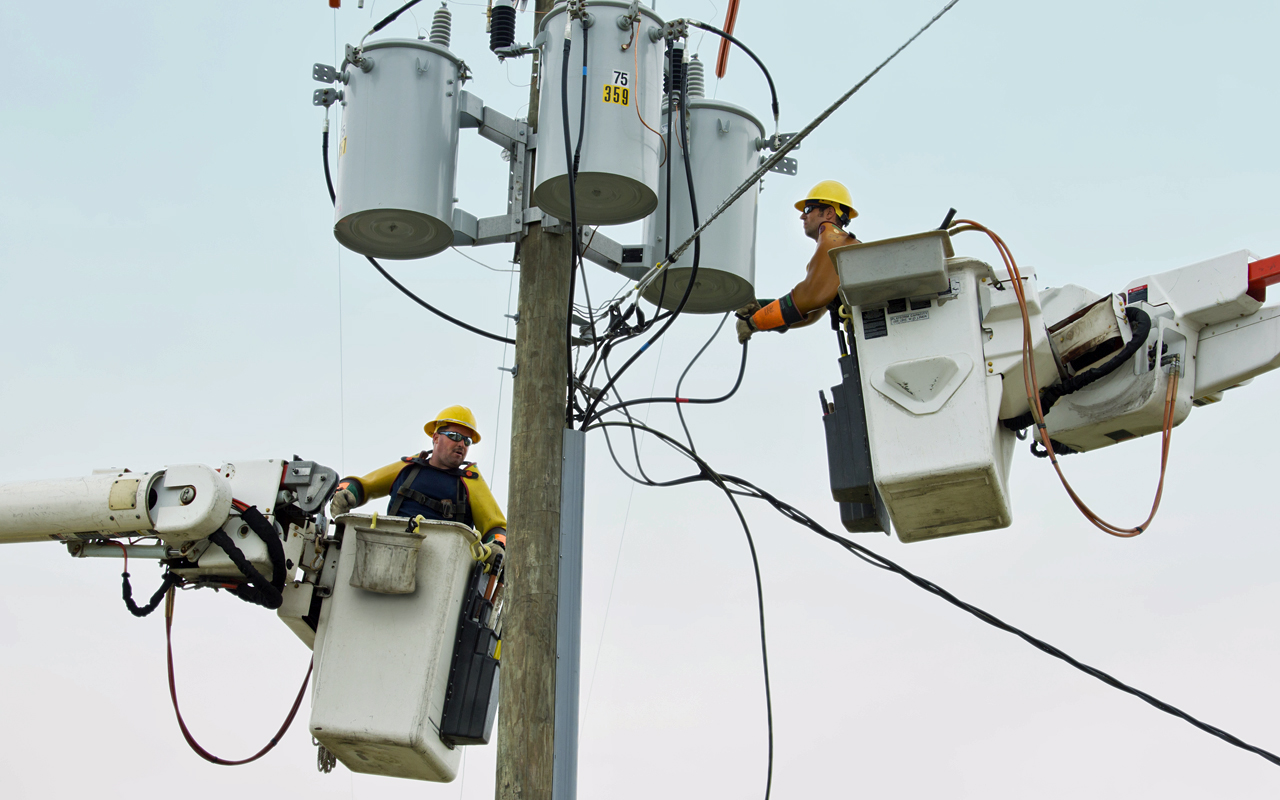
PPL Corp
- Dividend yield: 4.5%
- Consecutive years of annual dividend increases: 16
- PPL Corp. (PPL, $35.29) is one of the largest investor-owned companies in the utility sector, generating $7.5 billion in annual revenue. It’s also a little more diversified than your typical utility stock, providing service to more than 10 million customers across the U.S. and the U.K.
Importantly, management has shifted the company’s mix of business away from competitive energy markets, which accounted for 73% of sales in 2010, to be 100% focused on regulated utility operations. As a result, the company’s earnings are highly predictable, and PPL has numerous investment opportunities to profitably grow its regulated rate base in the future.
In fact, Morningstar analyst Andrew Bischof, CFA, believes “PPL has attractive regulated growth opportunities that could produce 5% annual rate base growth through 2021, supported by PPL’s operations in constructive regulatory jurisdictions.”
As a result, management expects the company to record 5%-6% annual earnings growth, which will drive dividend increases of about 4% annually. PPL has paid dividends for an impressive 287 consecutive quarters and offers one of the higher yields in its sector, making it an appealing candidate for retirement income and growth going forward.

Public Storage
- Dividend yield: 3.8%
- Consecutive years of annual dividend increases: 7
- Public Storage (PSA, $211.05) is an industry leader with more self-storage facilities than any company in the world. This REIT has been in business since 1972 and operates thousands of locations across the U.S. and Europe today.
The self-storage industry’s characteristics make Public Storage one of the best retirement stocks. First, tenants’ leases are on a month-to-month basis, which makes regular price increases possible in supply-constrained markets. And despite the relatively short-term nature of leases, switching costs are fairly high, providing very predictable cash flow. Transitioning from one storage unit provider to another is a pain and requires time and money to make it happen.
Public Storage has focused its business on major metropolitan areas that tend to have higher incomes and better population density than others. When combined with its leading scale and low operating costs, these factors have helped this REIT generate operating margins in excess of 50% in recent years.
PSA’s high-quality business model and excellent cash flow generation have enabled it to pay uninterrupted dividends for more than 25 years. The company has increased its dividend each year since 2010, and analysts expect a reasonable 80% AFFO payout ratio next year, so Public Storage should have no trouble continuing its dividend growth streak.
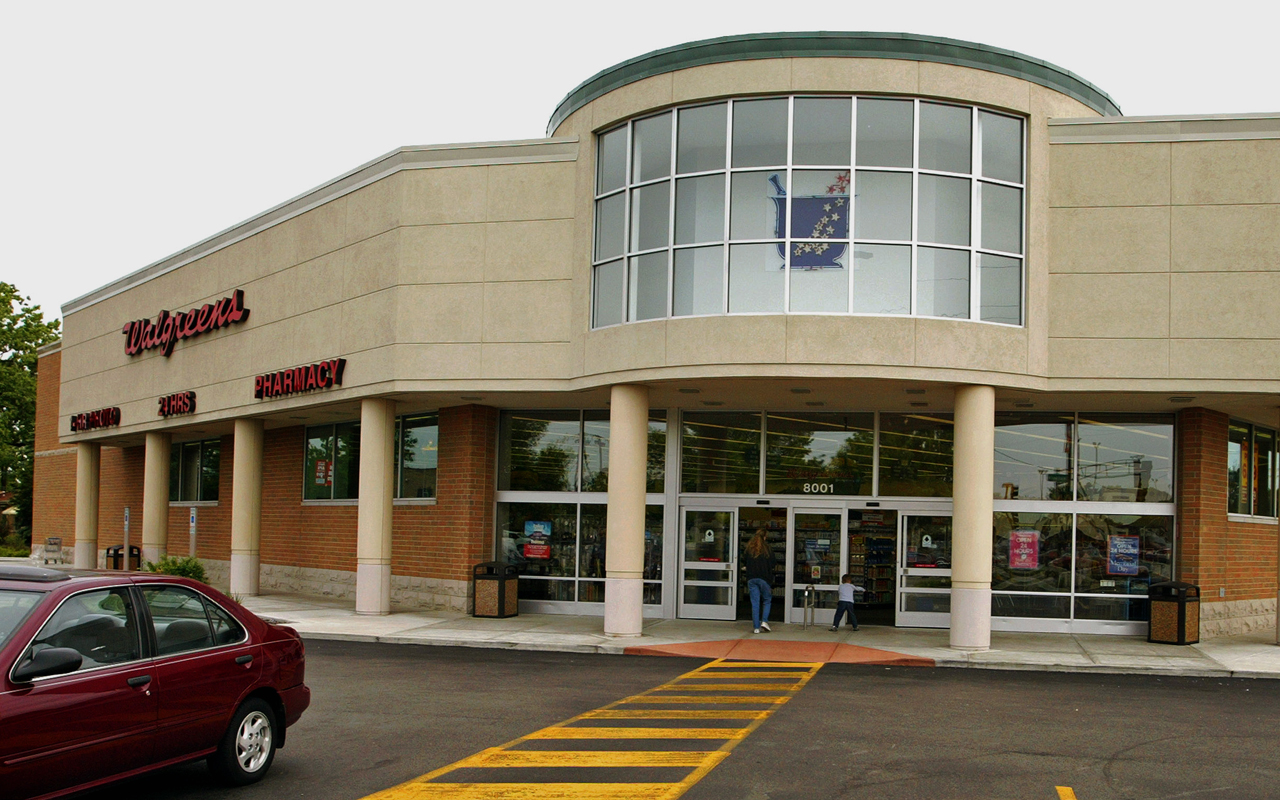
Realty Income
- Dividend yield: 4.7%
- Consecutive years of annual dividend increases: 24
- Realty Income (O, $55.22) has increased its monthly dividend for 80 consecutive quarters and is one of only nine U.S. REITs with at least one “A” credit rating. When combined with its relatively high yield, the company has earned a well-deserved reputation for safe income and growth.
Founded in 1969, Realty Income has built a portfolio of more than 5,000 commercial properties leased out to a diverse group of tenants under long-term contracts. The company’s real estate is focused on prime locations as demonstrated by its resilient occupancy level, which has never dipped below 96%. Management also has managed the company’s mix of tenants conservatively to reduce risk. No tenant is greater than 7% of Realty Income’s overall rent, and its 20 largest tenants represent a reasonable 53% of annualized rent revenue.
Equally important, no industry represents more than 11% of rent, and its largest exposures are to defensive sectors, such as drug stores, convenience stores, dollar stores, and health clubs.
While e-commerce could pose a legitimate long-term threat to many retailers, 20% of Realty Income’s total portfolio rent is from non-retail tenants. More importantly, 77% of its total portfolio rent is from retail tenants characterized by service-driven businesses, non-discretionary industries, low price points, and/or investment grade-rated credit. In other words, it seems unlikely that the rise of e-commerce would harm Realty Income’s business anytime soon. The company seems likely to remain a safe source of retirement income with moderate growth for many years to come.
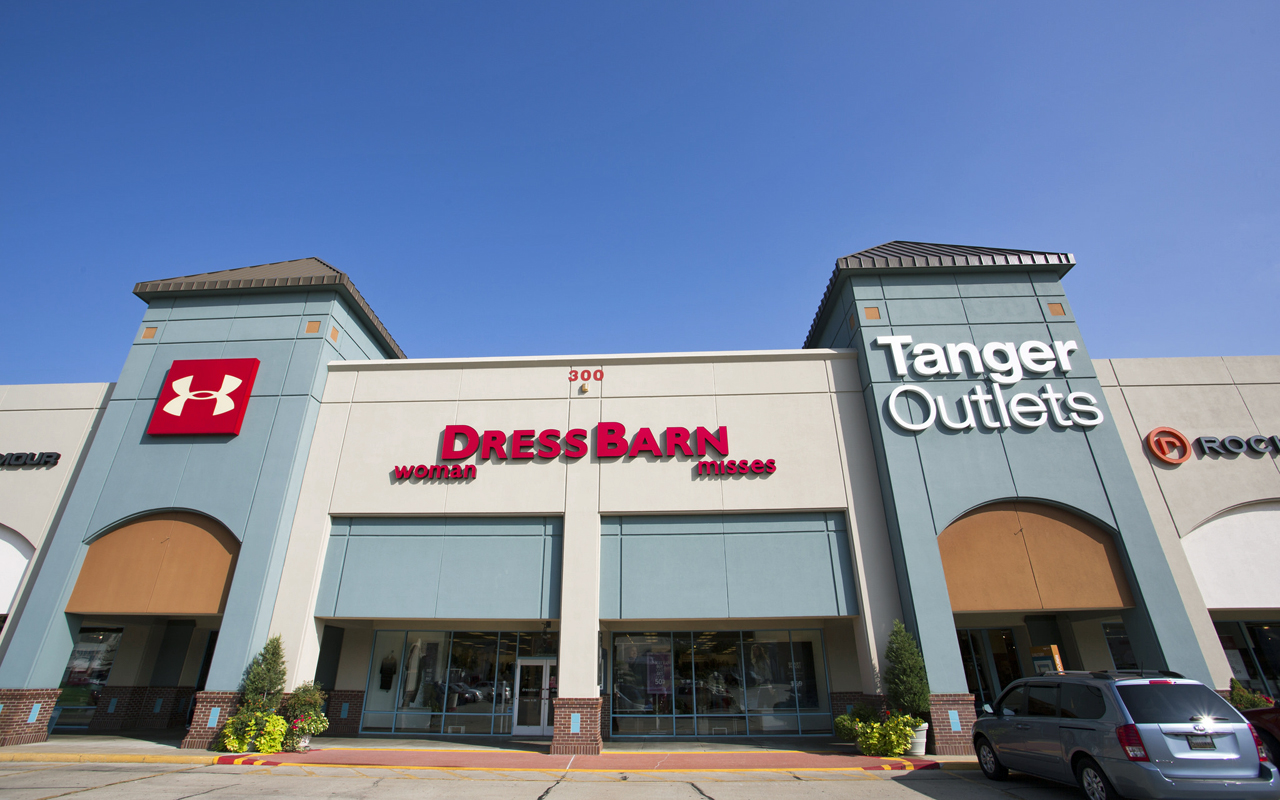
Tanger Factory Outlet Centers
- Dividend yield: 5.5%
- Consecutive years of annual dividend increases: 24
- Tanger Factory Outlet Centers (SKT, $24.99) is a real estate investment trust with 44 upscale outlet shopping centers spread across the country. These properties are leased out to more than 3,100 stores which are run by over 500 scompanies.
Many investors are spooked by retail-focused companies in the age of Amazon (AMZN), which is why Tanger’s stock has lost nearly a quarter of its value over the past year. However, the outlet mall operator's focus on offering a unique, high-end shopping experience has largely insulated it from any e-commerce headwinds thus far. In fact, management recently raised Tanger’s year-end occupancy guidance to 96.5% to 97%, and the firm continued to grow its AFFO in the latest quarter.
The dividend also remains in good shape considering Tanger’s healthy AFFO payout ratio (expected to be 56% for full-year 2017), an investment-grade credit rating from Standard & Poor's and 56 consecutive quarters of same-center net operating income growth.
Such resiliency and conservatism has allowed the business to boost its payout each year and deliver dividends every quarter since its 1993 IPO. Both trends seem likely to continue.

Ventas
- Dividend yield: 4.9%
- Consecutive years of annual dividend increases: 7
- Ventas (VTR, $62.73) is arguably one of the highest-quality health care REITs in the market. Approximately 94% of its revenue is from private-pay sources rather than Medicare and Medicaid, which could be pressured as reimbursement models evolve in the future. The company also boasts an investment-grade credit rating and has delivered double-digit FFO-per-share growth annually since 2001.
Ventas focuses on a diverse range of more than 1,200 health care properties, including senior living, medical office buildings, life science and acute care. Management has made several moves in recent years to strengthen the quality of the firm’s property portfolio. The company disposed of almost all of its skilled nursing facilities, as well as acquired acute care company Ardent Health Services and life sciences operator Wexford, positioning it for sustainable growth.
And as the senior population continues aging, Ventas is optimistic about demand tailwinds in the $1 trillion health care real estate market.
Ventas has paid uninterrupted dividends since going public in 1999 and has rewarded shareholders with 8% annual dividend growth since 2001. Health care spending is projected to grow 5.8% annually through 2024, and the REIT maintains a reasonable payout ratio near 75% – two signs that the payout should continue to rise in the years ahead.
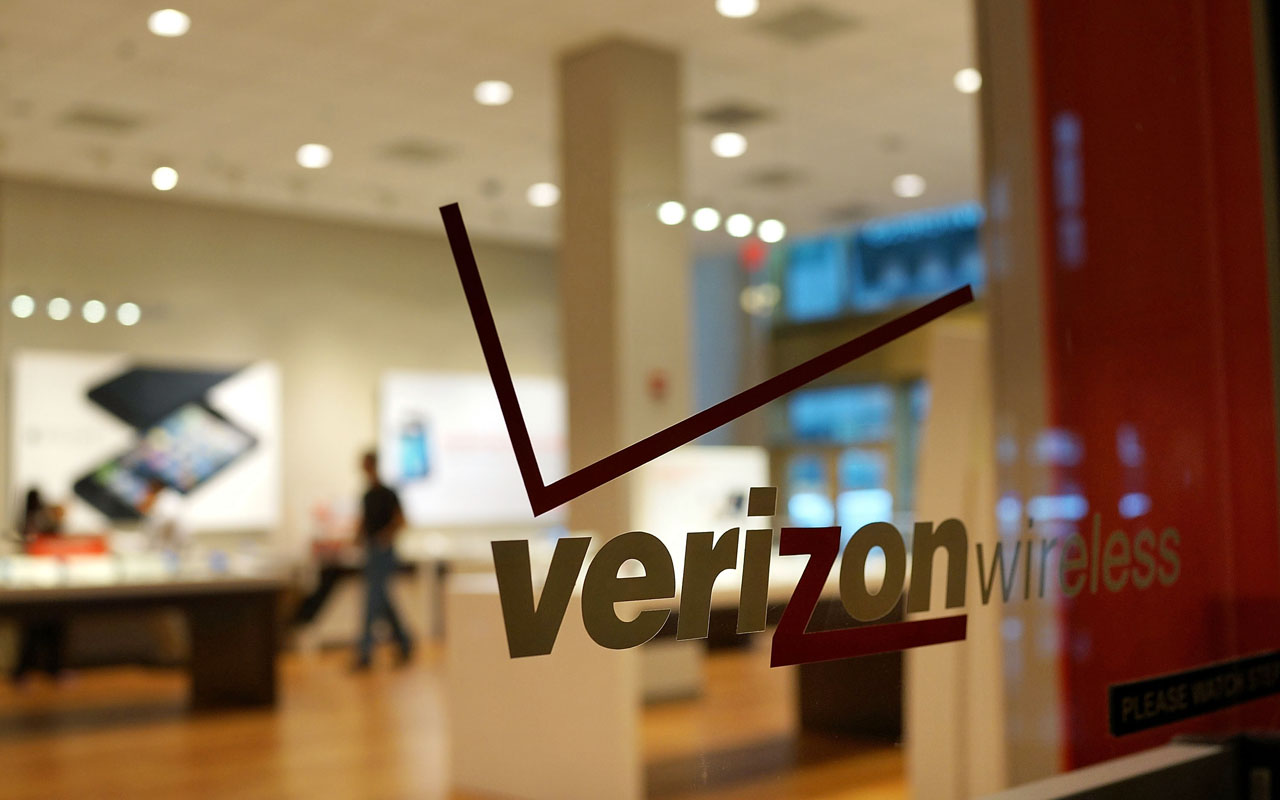
Verizon
- Dividend yield: 4.6%
- Consecutive years of annual dividend increases: 11
- Verizon (VZ, $50.92) is the largest provider of wireless services in the country, boasting approximately 115 million wireless retail customers and providing 4G LTE coverage to more than 98% of the U.S. population.
Smaller rivals T-Mobile (TMUS) and Sprint (S) have put pressure on the wireless market in recent years by offering unlimited data plans and improving the quality of their own networks. As a result, Verizon recorded its first-ever subscriber loss earlier this year and has found it increasingly difficult to maintain its premium pricing.
However, the company has since returned to subscriber growth, and Argus analyst Joseph Bonner, CFA, writes, “The subscriber growth suggests that Verizon is gaining traction from its new unlimited data plans and that industry competition slackened in 3Q.”
While the telecom market’s competitive environment does seem to be changing, Verizon’s dividend remains a solid bet for retirement income. The company and its predecessors boast a track record of paying uninterrupted dividends for more than three decades, and Verizon has boosted its payout for 11 consecutive years.
Management announced a $10 billion cost reduction plan earlier this year, which is expected to be completed by 2022 and fund the company’s dividend through cash savings. Combined with the company’s healthy and recession-resistant cash flow generation and analysts’ forecasts for low-single-digit earnings growth over the coming years, Verizon’s payout should keep improving.

Welltower
- Dividend yield: 5.3%
- Consecutive years of annual dividend increases: 14
An investment in Welltower (HCN, $66.12) represents a conservative way to play the theme of an aging U.S. population, which is expected to drive higher demand for the real estate investment trust’s 1,334 health care properties.
Specifically, with the 85-plus age group population expected to double in 20 years, Welltower’s focus on senior living (70% of third-quarter net operating income) should provide a nice tailwind for the company’s growth and the security of its dividend. Even better, Welltower’s portfolio is arguably more resilient than many other medical-focused REITs because its tenants don’t depend much on Medicare and Medicaid reimbursements, which could come under pressure depending on how Washington shapes tax and health care legislation in the years ahead.
Instead, 93% of Welltower’s facility revenue mix is derived from private pay. The company’s dividend is further supported by management’s conservatism, which is reflected in Welltower’s investment-grade credit rating and its reasonable AFFO payout ratio, which sits below 90%.
Welltower has paid uninterrupted dividends for more than 20 years and appears likely to continue rewarding shareholders with low-single-digit annual payout increases like it has done for more than a decade, making it one of the best retirement stocks for 2018 and beyond.
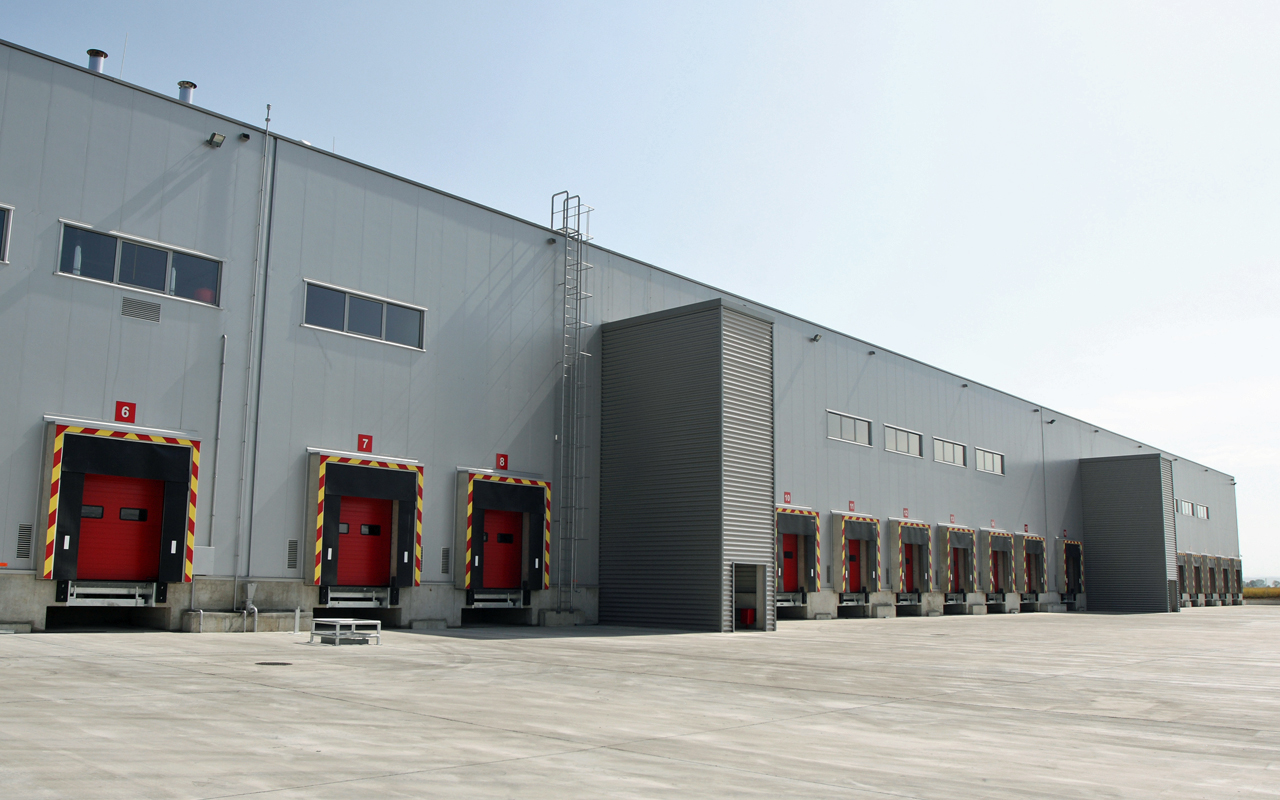
W.P. Carey
- Dividend yield: 5.7%
- Consecutive years of annual dividend increases: 19
- W.P. Carey (WPC, $70.10) is a real estate investment trust that has increased its dividend every year since going public in 1998, recording 19 consecutive years of payout growth. Part of the firm’s success is its focus on maintaining a highly diversified portfolio of assets.
Specifically, its properties are nicely spread among industrial (30%), office (25%), retail (16%) and warehouse (14%) functions; the company’s top 10 tenants combine for only 31.8% of annualized base rent; and the business spans the globe, with roughly two-thirds of its assets in the U.S. and another 30% in Europe.
W.P. Carey generates predictable cash flow, thanks in large part to a 99.8% occupancy rate and a weighted average remaining lease term of nearly a decade. When combined with its investment-grade credit rating and reasonable 75% AFFO payout ratio expected in 2017, WPC’s high dividend appears to be a solid fit for investors living off dividends in retirement.
Brian Bollinger was long CCI, GIS, NNN, PFE, PM, PPL, T and VZ as of this writing.
Get Kiplinger Today newsletter — free
Profit and prosper with the best of Kiplinger's advice on investing, taxes, retirement, personal finance and much more. Delivered daily. Enter your email in the box and click Sign Me Up.

Brian Bollinger is President of Simply Safe Dividends, a company that provides online tools and research designed to help investors generate safe retirement income from dividend stocks without the high fees associated with many other financial products.
-
 Get Netflix, Hulu and Apple TV Plus for Free by Joining T-Mobile
Get Netflix, Hulu and Apple TV Plus for Free by Joining T-MobileT-Mobile customers save up to $35/month on streaming services thanks to this Netflix, Hulu and Apple TV Plus bundle. Here’s how to get it.
By Rachael Green
-
 Missed Tax Day? You Could Still Be Eligible for These Valuable Tax Refunds
Missed Tax Day? You Could Still Be Eligible for These Valuable Tax RefundsTax Refunds As many as one million taxpayers could be missing out on a significant tax refund.
By Gabriella Cruz-Martínez
-
 What to Do With Your Tax Refund: 6 Ways to Bring Growth
What to Do With Your Tax Refund: 6 Ways to Bring GrowthUse your 2024 tax refund to boost short-term or long-term financial goals by putting it in one of these six places.
By Rachael Green
-
 What Does Medicare Not Cover? Eight Things You Should Know
What Does Medicare Not Cover? Eight Things You Should KnowHealthy Living on a Budget Medicare Part A and Part B leave gaps in your healthcare coverage. But Medicare Advantage has problems, too.
By Donna LeValley
-
 12 Great Places to Retire in the Midwest
12 Great Places to Retire in the MidwestPlaces to live Here are our retirement picks in the 12 midwestern states.
By Stacy Rapacon
-
 10 Cheapest Small Towns to Live In
10 Cheapest Small Towns to Live InThe cheapest small towns might not be for everyone, but their charms can make them the best places to live for plenty of folks.
By Dan Burrows
-
 15 Reasons You'll Regret an RV in Retirement
15 Reasons You'll Regret an RV in RetirementMaking Your Money Last Here's why you might regret an RV in retirement. RV-savvy retirees talk about the downsides of spending retirement in a motorhome, travel trailer, fifth wheel or other recreational vehicle.
By Bob Niedt
-
 The Cheapest Places To Retire in the US
The Cheapest Places To Retire in the USWhen you're trying to balance a fixed income with an enjoyable retirement, cost of living is a crucial factor to consider.
By Stacy Rapacon
-
 Stock Market Today: Stocks End Mixed Ahead of Powell
Stock Market Today: Stocks End Mixed Ahead of PowellPolitical upheaval in South Korea kept investors on their toes Tuesday.
By Karee Venema
-

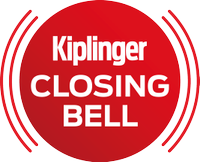 Stock Market Today: Stocks Drop, Oil Spikes After Iran Attacks Israel
Stock Market Today: Stocks Drop, Oil Spikes After Iran Attacks IsraelA massive port strike and dismal economic data also weighed on the main indexes Tuesday.
By Karee Venema
